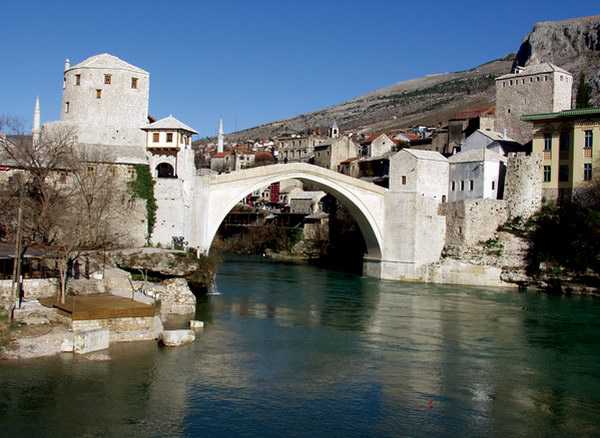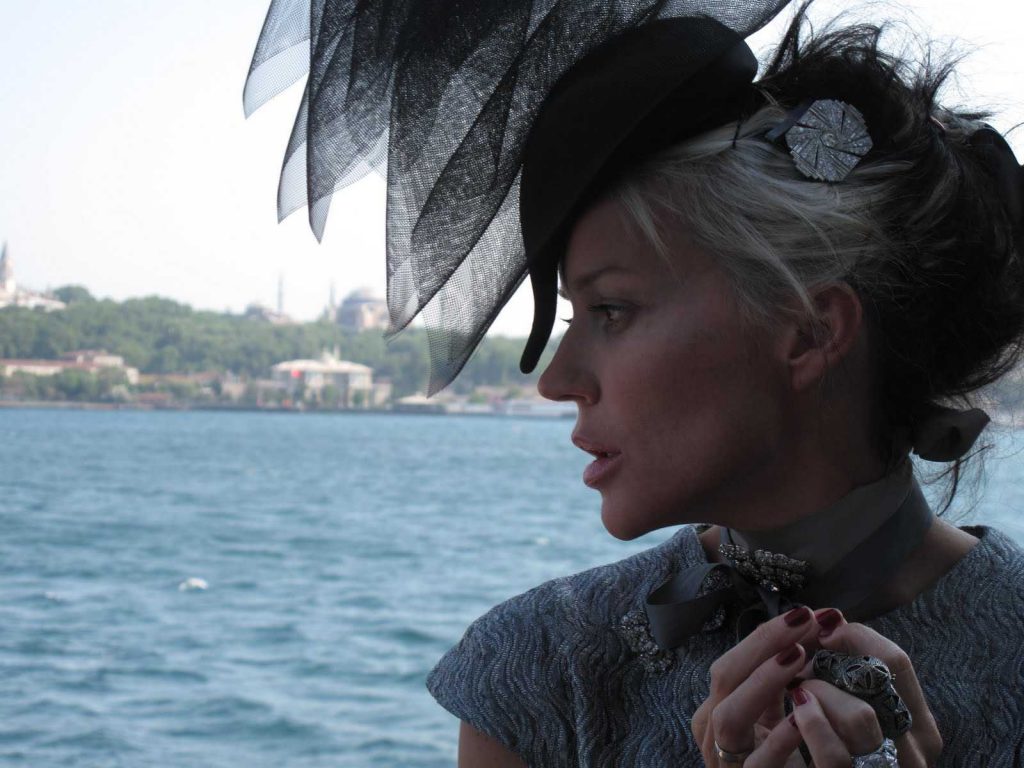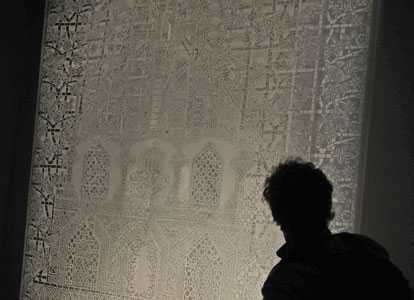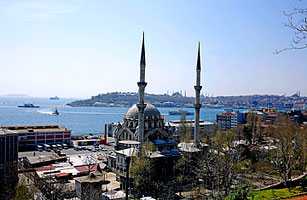National papers frequently report that various historical edifices built in Ottoman times are dilapidated. Even graver reports note that mosques have been converted into pubs or bars. However, recently Turkey appears to have paid greater attention to the preservation of Ottoman heritage abroad.

In recent years, a growing number of historic buildings in Central Asia, the Balkans, Europe, the Middle East and Africa have been restored and renovated.
The restoration and renovation works are not limited to Ottoman heritage alone; Turkey has been carrying out a broad initiative in a large number of different countries in the fields of education, cultural cooperation, energy, commerce, transportation, health, housing and administrative issues as well.
The initiative features some humanitarian aid operations, too. Turkey sees this as a tool that will promote friendlier bilateral relations. Various organizations and institutions, including the Turkish Cooperation and Development Agency (TİKA), the Ministry of Foreign Affairs, the Directorate of Religious Affairs (DİB), the Ministry of Culture and Tourism and the Ministry of National Education are taking part in these projects.
While it is possible to refer to a common goal in these initiatives and studies, there is no working coordination and harmonization between the said institutions. It was even impossible to have the records for these initiatives as a whole as some of these have been held by civil society organizations. In consideration of this problem, the Office of Public Diplomacy, a newly established institution under the supervision of the Office of the Prime Minister, has taken action.
The office has drafted a comprehensive report providing details on such initiatives over the past years. The coordinator of the office, İbrahim Kalın, speaking to Cihan news agency, said on the publication of the report: “Turkey’s contributions are well known in these regions. We just wanted to make sure that the Turkish people would also know that humanitarian aid and other operations were carried out thanks to cooperation between the state and civil society organizations.”
Cooperation between equal brothers
Kalın says the report, “Dossier on Greater Turkic World” does not hold a nationalist connotation, stressing that it is actually a unifying concept between the Turkic republics, Turkey and the nations formerly ruled under Ottoman administration. İbrahım Kalın notes that the report is an answer to the question “who has taken care of the Turkic world?” Kalın however insists that Turkey does not have imperialistic motives. He further adds this is a process of cooperation between equals rather than a form of domination.
The report states that Turkey has diversified its forms of contributions to Turkic states. The initiatives include restoration of historical ruins, student exchange programs, a TRT television station intended for Eurasian audiences, meetings between members of Turkic communities in Turkey, construction of wells and hospitals, housing support and beekeeping training. İbrahim Kalın describes this as “expansion of the axis” of Turkey’s foreign policy, rather than an “axis shift,” as has been claimed by some writers concerned that Turkey was turning away from the West and toward the East.
The amount of foreign aid provided by Turkey has dramatically increased in the last decade from $85 million in 2002 to $967 million in 2010. The total amount of aid over this period of time has been almost $5 billion. This means that Turkey is providing nearly $1 billion in foreign aid to the greater Turkic world every year.
The new style in foreign policy and the growing Turkish national economy has had a visible impact on this transformation. The proactive foreign policy stance enables Turkey to get the necessary permits to restore and renovate historical buildings and ruins. For instance, Turkey is able to seek permission from the Greek authorities for the restoration of the Fethiye Mosque in Athens.
Many historic buildings from Ottoman era have been restored
Restoration and reconstruction work make up the larger part of the list of work done as part of the initiative briefly described above. Such work has been conducted in many areas including Central Asia, the Balkans, Eastern Europe, Middle East and Africa. The Turkish Monuments Project being implemented in Mongolia is probably one of the most important of these works. The project seeks to reconstruct the ruins of the Orhun Inscriptions, the oldest known written documents of Turkic history.
A substantial number of rare pieces of Turkic history have been discovered and identified during excavation works since 1994 as part of the project. Thanks to the Orhun Museum, these rare pieces and documents have been protected as the oldest written samples of Turkish literature.
The Sultan Sancar Tomb in Turkmenistan was restored by TİKA; in addition, funds were allocated for the identification of the grave of Seljuk Sultan Alparslan in this country and its reconstruction as a memorial tomb. Turkey is also working on the tomb of Arslan Baba, the teacher and mentor or Ahmed Yesevi in Kazakhstan and the site landscaping of the madrasah where Mevlana Jelaluddin Rumi was born in Afghanistan.
The renovated and restored buildings and works include:
Mostar Bridge Restoration (Bosnia and Herzegovina)
Belgrade Sheikh Mustafa Tomb (Serbia)
Prizren Sinan Pasha Mosque (Kosovo)
Parruce Mosque (Albania)
Osmanbasiç Mosque (Montenegro)
Mustafa Pasha Mosque (Macedonia)
Budapest Gül Baba Tomb (Hungary)
Razgrad Makbul İbrahim Pasha (Bulgaria)
Hafeez Ahmed Pasha Library (Greece)
Haji Giray Khan Tomb (Ukraine)
Sarı Saltuk Tomb (Romania)
Damascus Süleymaniye Complex (Syria)
Eastern Tripoli Mawlawi Shrine (Lebanon)
Al-Aqsa Springs (Palestine)
Ottoman works (Sudan)
Ottoman Ghar al Melh Castle (Tunisia)
Most important fields to use soft power: Education and culture
While Turkey’s foreign policy gets stronger in the region where it is located, one of the advantages of Ankara is seen as its “soft power.” For Turkey, soft power means Turkey’s historical depth. Co-habitation with the people of the region for centuries paves the way for Turkish people to grasp issues regarding the region in a better way. In relations with the countries in the Greater Turkic Lands, the schools built by Turkish businessmen, and the Turkish language surely play the most important role.
Turkish culture and foreign policy represent an entirety of a certain stance and values. The components of this stance are peace, compassion, diplomatic solutions, mutual economic dependence and the encouraging of accountability. Having all these features with Turkey and facilitating regional stability can be only possible through educational and cultural activities.
We witness state-sponsored developments that further deepen cultural and educational cooperation in the Greater Turkic Lands. As part of one such project, named the “Great Student Project,” 30,270 students from 57 countries and communities were placed in Turkish universities. Almost all of them are seen as Turkey’s honorary ambassadors.
Another project that Ankara puts emphasis on is the Turkology Project. The project was launched in 1999 and it vies to spread Turkish language and culture in the long term in neighboring, friend and other Turkic countries. Turkology, Turkish Language and Literature and Turkish Language Education Centers are opened in many countries as part of this project.
A Summer Internship Program, which has been held since 2003, also fulfills an important mission. About 100 students participate in the program every year and they receive Turkish, Turkish culture and history classes, also having the chance to see Turkey’s historical and touristic places. International Hoca Ahmet Yesevi Turkish-Kazakh University and Kyrgyzstan-Turkey Manas University are also important bridges between Ankara and Central Asia.
Cihan news agency
 The Museum of the City of Athens – Vouros-Eytaxias Foundation inaugurated an exhibition of photos and archive material on “Greek Architects of Istanbul in the Era of Westernization“, on Monday, May 30th 2011. The exhibition is organized by the Zographeion Alumni Association (Istanbul) in collaboration with the ISTANBUL 2010 – European Capital of Culture Agency and is sponsored by Public Benefit Foundation John S. Latsis.
The Museum of the City of Athens – Vouros-Eytaxias Foundation inaugurated an exhibition of photos and archive material on “Greek Architects of Istanbul in the Era of Westernization“, on Monday, May 30th 2011. The exhibition is organized by the Zographeion Alumni Association (Istanbul) in collaboration with the ISTANBUL 2010 – European Capital of Culture Agency and is sponsored by Public Benefit Foundation John S. Latsis.




